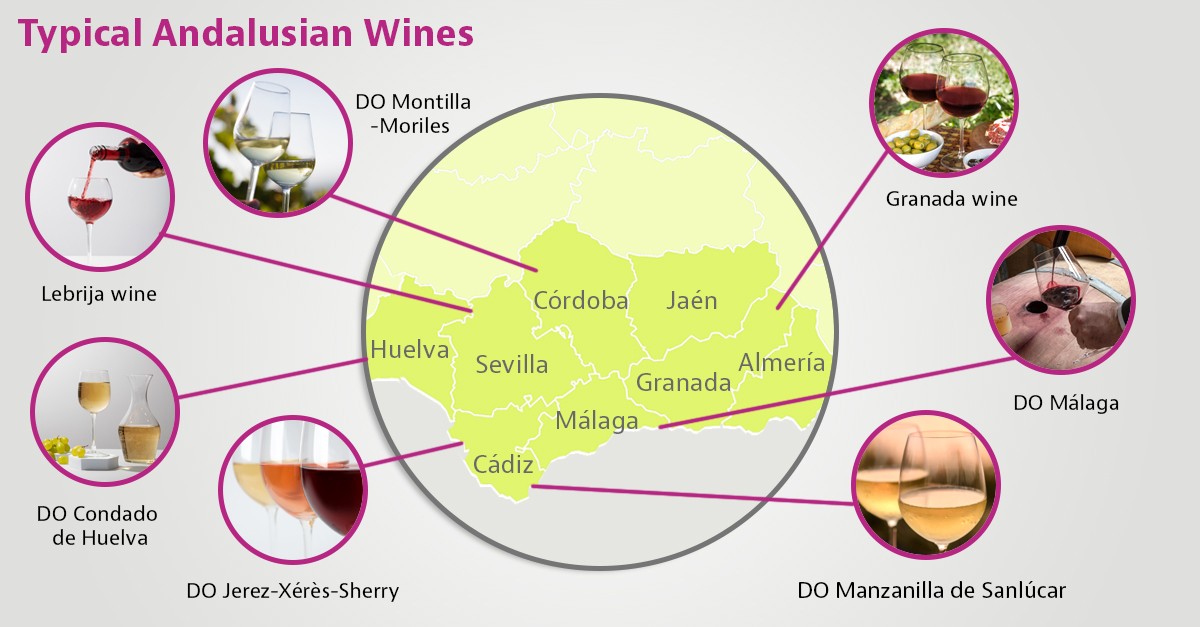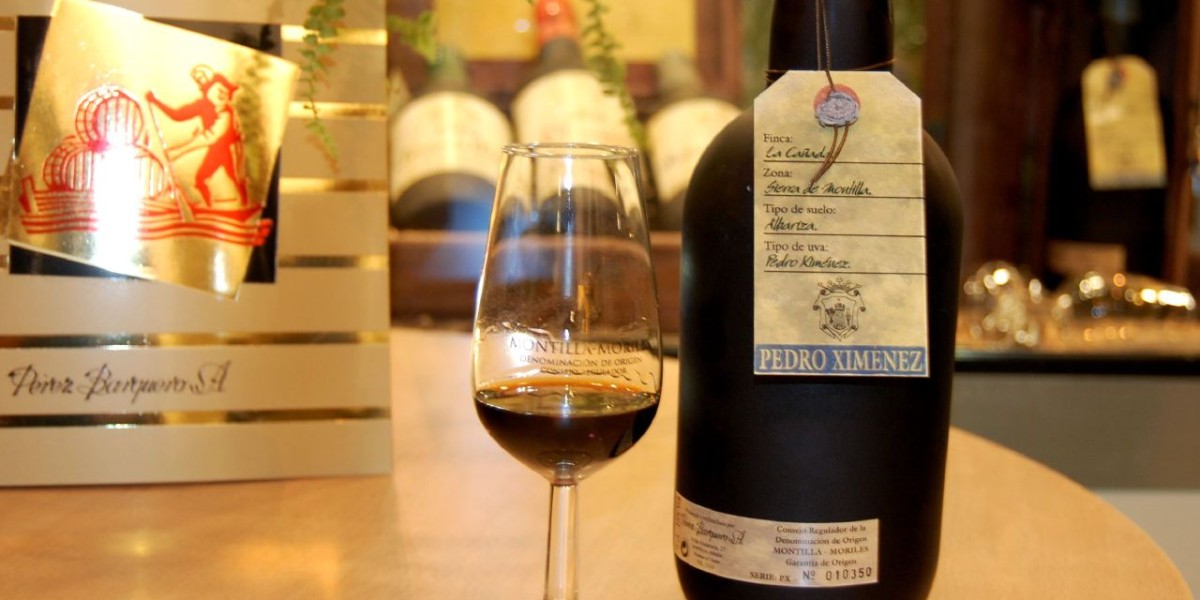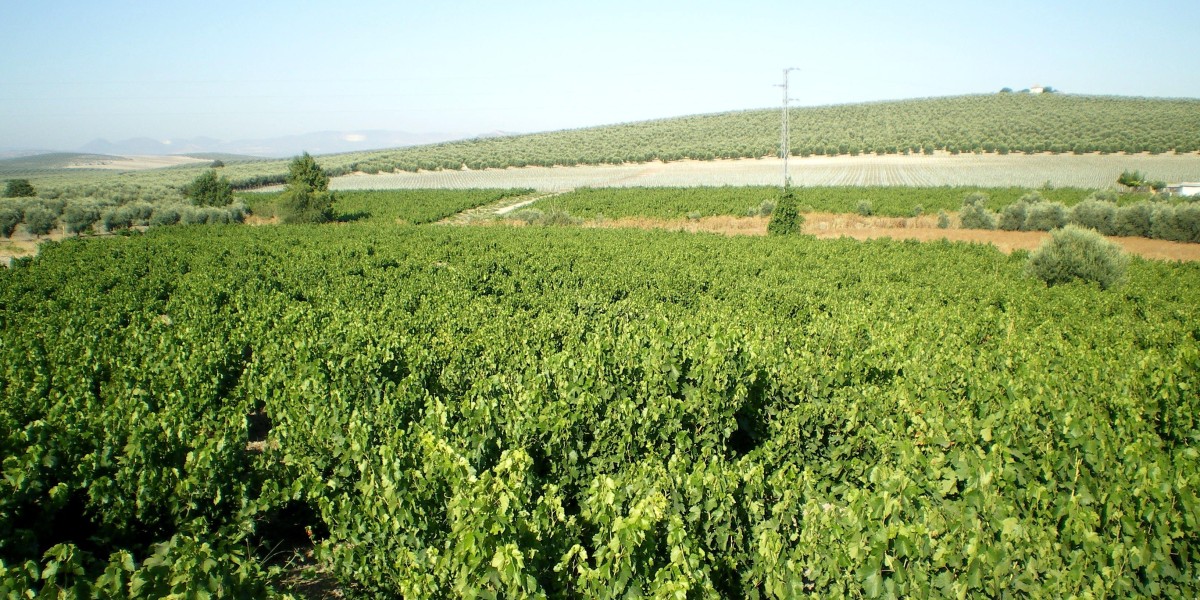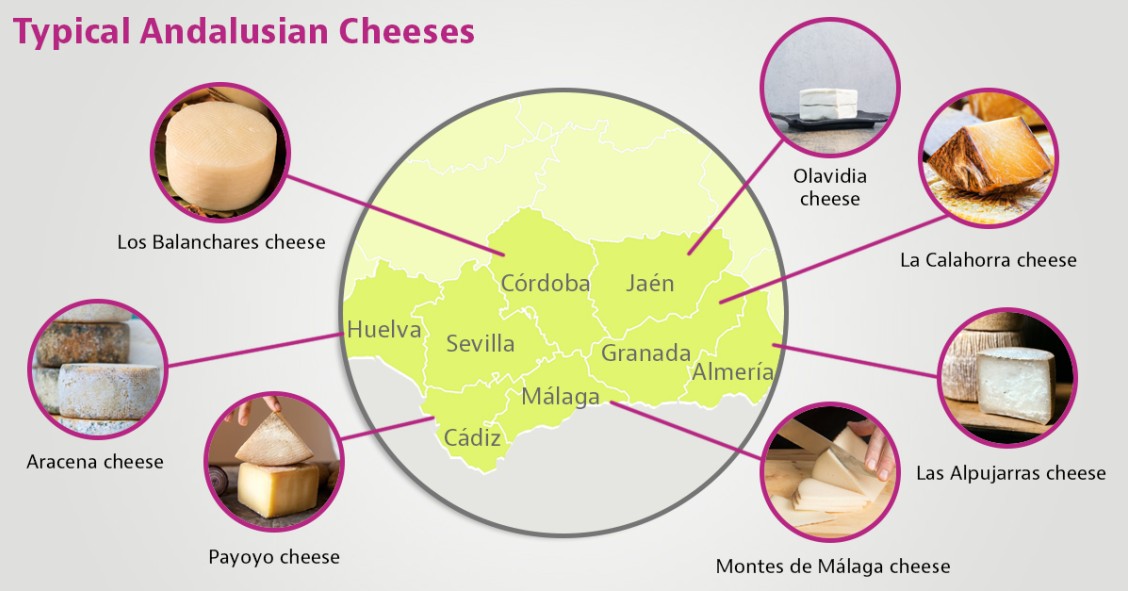
Andalusia is a region renowned for its exquisite gastronomy and, notably, its rich winemaking heritage. Its diverse array of wines has garnered international recognition, making wine a cornerstone of the region’s culinary culture. More than just a complement to food, Andalusian wines offer a distinctive sensory journey through the land’s traditions and landscapes.
Explore the most iconic wines of Andalusia across its provinces, each with its own character and story to tell.
Condado de Huelva DO (Huelva)
The Condado de Huelva is a Designation of Origin (DO) that spans the province of the same name, renowned for its Andalusian white wines, primarily made from the Zalema grape variety. These wines are distinguished by their freshness and fruity notes, making them an ideal pairing for traditional fish and seafood dishes.
In addition, the province’s warm climate and sandy soils contribute to the production of both fortified and naturally sweet wines that appeal to the most discerning palates. The region’s winemaking tradition dates back to Phoenician and Roman times, underscoring its deep historical roots.
Jerez-Xérès-Sherry DO (Cádiz)
Among the finest Andalusian wines is this Designation of Origin – perhaps the most internationally renowned – celebrated for its fortified wines that skilfully blend tradition with innovation. Located in the province of Cádiz, it offers a wide array of styles, from the dry and delicate Fino and Manzanilla to the rich, complex Oloroso and the lusciously sweet Pedro Ximénez.
The hallmark of these wines is biological ageing under a veil of flor, a unique technique that imparts their distinctive flavour and aroma. Exceptionally versatile, these wines can be enjoyed on any occasion, whether as an aperitif or paired with a full meal.

Manzanilla from Sanlúcar DO (Cádiz)
Manzanilla is a distinctive type of sherry that can only be produced in Sanlúcar de Barrameda, thanks to the town’s unique microclimate. Its freshness and subtle salinity, attributed to the sea breeze that filters through the ageing bodegas under a veil of flor, make it a truly singular wine. It pairs beautifully with classic Andalusian tapas, such as Iberian ham and olives.
Sanlúcar de Barrameda is steeped in winemaking tradition, with numerous bodegas offering guided tours that reveal the craftsmanship behind this exceptional wine. More than just a drink, Manzanilla is a cultural emblem, celebrated each year during local festivities like the Manzanilla Fair.
Málaga DO (Málaga)
The Málaga designation of origin is renowned for its sweet wines, crafted mainly from the Moscatel and Pedro Ximénez grape varieties. These wines are celebrated for their rich aromas of raisins and honey, making them an ideal accompaniment to desserts or a perfect match for cured cheeses.
Málaga’s winemaking tradition dates back to Phoenician times and continues to uphold its reputation as a benchmark for sweet wine production. In addition, the region showcases its versatility through the Sierras de Málaga designation, which includes a variety of dry wines that further highlight the area's diverse viticultural heritage.
Montilla-Moriles DO (Córdoba)
Montilla-Moriles is a renowned wine-producing region in the province of Córdoba, best known for its fortified wines made predominantly from the Pedro Ximénez grape. These wines are distinguished by their aromatic complexity and natural sweetness, making them perfect for pairing with desserts or savoured on their own as a digestif.
A hallmark of the region is oxidative ageing, a technique that imparts exceptional depth and character to the wines. The winemaking tradition in Montilla-Moriles runs deep, with family-run bodegas passing down their expertise through generations, preserving a rich heritage of craftsmanship.

Lebrija wine (Seville)
Lebrija is a small town in the province of Seville that has earned acclaim for its red and white wines, crafted from both native and international grape varieties. The area’s clay-rich soils and warm climate contribute to the production of full-bodied wines with a distinctive character.
These wines pair beautifully with traditional Andalusian dishes such as gazpacho or fried fish. The region encompasses the wine-growing areas of Lebrija and El Cuervo, both of which are gaining increasing recognition on the Spanish wine map.
Granada wine (Granada)
Granada wine is an emerging gem within the Andalusian wine scene, cultivated in a high-altitude setting characterised by a Mediterranean-continental climate. Under the protected geographical indication (PGI) ‘Altiplano de Sierra Nevada’, these wines are noted for their freshness, aromatic intensity, and excellent balance, in both reds and whites.
One of the province’s most iconic subregions is Contraviesa-Alpujarra, nestled between the mountains of the same name and the Mediterranean Sea. This wine-growing area, situated at altitudes exceeding 1,000 metres and featuring poor, rocky soils, is highly regarded for its traditional viticultural practices.
Where to enjoy wine in Andalusia
Andalusia offers countless opportunities to savour its distinctive wines in unique and unforgettable settings. From the historic bodegas of Jerez to the lively tapas bars of Seville, every corner beckons you to discover new flavours and experiences.
Moreover, numerous wine-related events and festivals take place throughout the year. The many wine fairs across the region, alongside cherished traditions such as the Manzanilla Festival, provide perfect occasions to fully immerse yourself in Andalusian winemaking.

